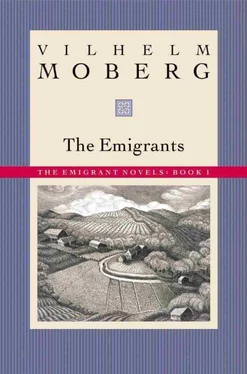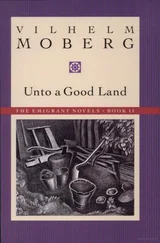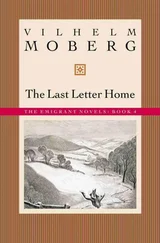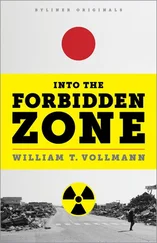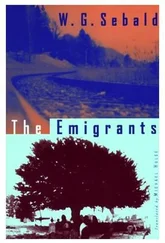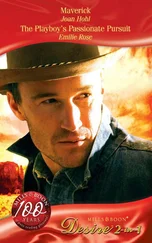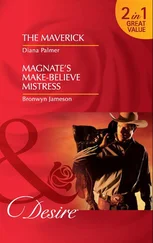Vilhelm Moberg - The Emigrants
Здесь есть возможность читать онлайн «Vilhelm Moberg - The Emigrants» весь текст электронной книги совершенно бесплатно (целиком полную версию без сокращений). В некоторых случаях можно слушать аудио, скачать через торрент в формате fb2 и присутствует краткое содержание. Год выпуска: 1995, Издательство: Minnesota Historical Society Press, Жанр: Классическая проза, на английском языке. Описание произведения, (предисловие) а так же отзывы посетителей доступны на портале библиотеки ЛибКат.
- Название:The Emigrants
- Автор:
- Издательство:Minnesota Historical Society Press
- Жанр:
- Год:1995
- ISBN:нет данных
- Рейтинг книги:3 / 5. Голосов: 1
-
Избранное:Добавить в избранное
- Отзывы:
-
Ваша оценка:
- 60
- 1
- 2
- 3
- 4
- 5
The Emigrants: краткое содержание, описание и аннотация
Предлагаем к чтению аннотацию, описание, краткое содержание или предисловие (зависит от того, что написал сам автор книги «The Emigrants»). Если вы не нашли необходимую информацию о книге — напишите в комментариях, мы постараемся отыскать её.
The Emigrants — читать онлайн бесплатно полную книгу (весь текст) целиком
Ниже представлен текст книги, разбитый по страницам. Система сохранения места последней прочитанной страницы, позволяет с удобством читать онлайн бесплатно книгу «The Emigrants», без необходимости каждый раз заново искать на чём Вы остановились. Поставьте закладку, и сможете в любой момент перейти на страницу, на которой закончили чтение.
Интервал:
Закладка:
Moberg returned to Sweden for a face-to-face confrontation with his critics. He argued that the realism of his narrative dictated the use of straight talk and believable characterization. During the ensuing “decency debate,” or “Reuterdahl feud” as it was known in Sweden, four thousand Swedes signed a petition against the novel. Moberg reported that one protester went so far as to burn the book in his furnace while singing the Swedish national anthem, “Du gamla, du fria” (The old and the free). Certain church groups in Swedish America joined the protest action.
By the mid-1950s the protest had run its course. Moberg noted that even Swedish church groups were among those present in Karlshamn, Sweden, in 1959 for the public unveiling of the statue of Karl Oskar and Kristina. A replica of that statue now stands in downtown Lindstrom, Minnesota. 1
R. McK.
NOTE
1. Moberg discussed this interlude at some length in “Romanen om utvandrarromanen,” 317–25. See also Ebbe Reuterdahl, Vem har rätt? I litteraturfejden Moberg-Reuterdahl (Uppsala: Författarens Förlag, 1951).
Bibliography for the Emigrant Novels
Compiled by Vilhelm Moberg
Pehr Kalm: En resa i Norra Amerika. I–III. (1753–1761.)
Carl Aug. Gosselman: Resa i Norra Amerika. (Stockholm 1835.)
Hans Mattson: Minnen. (Chicago 1890.)
Johan Bolin: Beskrifning öfwer Nord-Amerikas Förenta Stater. (Wexiö 1853.)
Ole Rynning: Beretning om Amerika. (Kristiania 1838.)
Gustaf Unonius: Minnen från en sjuttonårig vistelse i Nordvestra Amerika. I–II. (Uppsala 1862.)
Emeroy Johnson: Early Life of Eric Norelius. 1833–1862. (Rock Island 1934.)
Oscar N. Olsson: The Augustana Lutheran Church in America. Pioneer Period 1846–1860. (Rock Island 1934.)
N. Lindgren: Handlingar rörande åkianismen. (Wexiö 1867.)
E. Herlenius: Åkianismens historia. (Stockholm 1902.)
——. Erik Janseismens historia. (Stockholm 1900.)
M. A. Mikkelsen: The Bishop Hill Colony. (Chicago 1892.)
George M. Stephenson: The Religious Aspects of Swedish Immigration. (Minneapolis 1932.)
L. Landgren: Om Sectväsendet. (Härnösand 1878.)
Joh. Schröder: Vägvisare för Emigranter. (Stockholm 1868.)
H. Hörner: Nyaste Handbok för Utvandrare. (Stockholm 1868.)
A. E. Strand: A History of the Swedish-Americans of Minnesota. I–III. (Chicago 1910.)
Theodore C. Blegen: Building Minnesota. (Minnesota Historical Society. 1938.)
——. Norwegian Migration to America. (Northfield 1940.)
——. Land of Their Choice. (Minneapolis 1955.)
Lawrence Guy Brown: Immigration. (New York 1933.)
W. J. Petersen: Steamboating on the Upper Mississippi. (Iowa City 1937.)
Herbert and Edward Quick: Mississippi Steamboating. (New York 1926.)
Joseph Henry Jackson: Forty-Niners. (Boston 1949.)
——. Gold Rush Album. (New York 1949.)
Henry K. Norton: The Story of California. (Chicago 1923.)
G. Catlin: Nord-Amerikas Indianer. övers. från eng. (Stockholm 1848.)
Colin F. MacDonald: The Sioux War of 1862.
I. V. D. Heard: The History of the Sioux War. (New York 1863.)
J. F. Rhodes: The History of the Civil War. (1917.)
C. Channing: A History of the United States I–VI. (1925.)
Edvard A. Steiner: On the Trail of the Immigrant. (New York 1906.)
Francis Parkman: The Oregon Trail. (New York 1950.)
Oscar Commetant: Tre år i Förenta Staterna. lakttagelser och skildringar. (Stockholm 1860.)
Clarence S. Peterson: St. Croix River Valley Territorial Pioneers. (Baltimore 1949.)
John R. Commons: Races and Immigrants in America. (New York 1907.)
A. W. Quirt: Tales of the Woods and Mines. (Waukesha 1941.)
The Frontier Holiday. A collection of writings by Minnesota Pioneers. (St. Paul 1948.)
Robert B. Thomas: The Old Farmers Almanac. First issued in 1792 for the Year 1793. (Boston 1954.)
Minnesota Farmers Diaries: William R. Brown 1845–1846.
——. Y. Jackson 1852–1863. (The Minnesota Historical Society. St. Paul 1939.)
Swedish-American Historical Bulletin. 1928–1939. (St. Paul.)
Year-Book of The Swedish Historical Society of America. 1909–1910. 1923–1924. (Minneapolis.)
G. N. Swahn: Svenskarna i Sioux City. Några blad ur deras historia. (Chicago 1912.)
Roger Burlingame: Machines That Built America. (New York 1953.)
Railway Information Series: A Chronology of American Railroads.
——. The Human Side of Railroading. (Washington 1949.)
Andrew Peterson: Dagbok åren 1854–898. En svensk farmares levnadsbeskrivning. 16 delar. (Manuskript i Minnesota Historical Library. St. Paul.)
Mina Anderson: En nybyggarhustrus minnen. (Manuskript tillh. förf.)
Alford Roos. Diary of my father Oscar Roos. (Manuskript d: o.)
Peter J. Aronson: En svensk utvandrares minnen. (Manuskript d: o.)
Charles C. Anderson: Levernesbeskrivning. (Manuskript d: o.)
Eric A. Nelson: My Pioneer Life. (Manuskript d: o.)
V.M.
Locarno, June 1, 1959.
Suggested Readings in English
Compiled by Roger McKnight
About Vilhelm Moberg:
Holmes, Philip. Vilhelm Moberg. Boston: Twayne, 1980.
McKnight, Roger, “The New Columbus: Vilhelm Moberg Confronts American Society,” Scandinavian Studies 64 (Summer 1992): 356–89.
Moberg, Vilhelm. The Unknown Swedes: A Book About Swedes and America, Past and Present. Carbondale: Southern Illinois University Press, 1988.
Thorstensson, Roland B. “Vilhelm Moberg as a Dramatist for the People.” Ph.D. diss., University of Washington, 1974.
Wright, Rochelle. “Vilhelm Moberg’s Image of America.” Ph.D. diss., University of Washington 1975.
About Swedish Immigration:
Barton, H. Arnold. A Folk Divided: Homeland Swedes and Swedish Americans, 1840–1940. Carbondale: Southern Illinois University Press, 1994.
——, ed. Letters from the Promised Land: Swedes in America, 1840–1914. Minneapolis: University of Minnesota Press for the Swedish Pioneer Historical Society, 1975.
Beijbom, Ulf, ed. Swedes in America: New Perspectives. Växjö: Swedish Emigrant Institute, 1993.
Blanck, Dag and Harald Runblom, eds. Swedish Life in American Cities. Uppsala: Centre for Multiethnic Research, 1991.
Hasselmo, Nils. Swedish America: An Introduction. New York: Swedish Information Service, 1976.
Ljungmark, Lars. Swedish Exodus. Carbondale: Southern Illinois University Press, 1979.
Nordstrom, Byron, ed. The Swedes in Minnesota. Minneapolis: Denison, 1976.
By Way of Introduction The Peasants
This is the story of a group of people who in 1850 left their homes in Ljuder Parish, in the province of Småland, Sweden, and emigrated to North America.
They were the first of many to leave their village. They came from a land of small cottages and large families. They were people of the soil, and they came of a stock which for thousands of years had tilled the ground they were now leaving. Generation had followed generation, sons succeeded fathers at harrow and plow, and daughters took their mothers’ place at spinning wheel and loom. Through ever-shifting fortunes the farm remained the home of the family, the giver of life’s sustenance. Bread came from the rye field and meat from the cattle. Clothing and shoes were made in the home by itinerant tailors and cobblers, out of wool from the sheep, flax from the ground, skins from the animals. All necessary things were taken from the earth. The people were at the mercy of the Lord’s weather, which brought fat years and lean years — but they depended on no other power under the sun. The farm was a world of its own, beholden to no one. The cottages nestled low and gray, timbered to last for centuries, and under the same roof of bark and sod the people lived their lives from birth to death. Weddings were held, christening and wake ale was drunk, life was lit and blown out within these same four walls of rough-hewn pine logs. Outside of life’s great events, little happened other than the change of seasons. In the field the shoots were green in spring and the stubble yellow in autumn. Life was lived quietly while the farmer’s allotted years rounded their cycle.
Читать дальшеИнтервал:
Закладка:
Похожие книги на «The Emigrants»
Представляем Вашему вниманию похожие книги на «The Emigrants» списком для выбора. Мы отобрали схожую по названию и смыслу литературу в надежде предоставить читателям больше вариантов отыскать новые, интересные, ещё непрочитанные произведения.
Обсуждение, отзывы о книге «The Emigrants» и просто собственные мнения читателей. Оставьте ваши комментарии, напишите, что Вы думаете о произведении, его смысле или главных героях. Укажите что конкретно понравилось, а что нет, и почему Вы так считаете.
